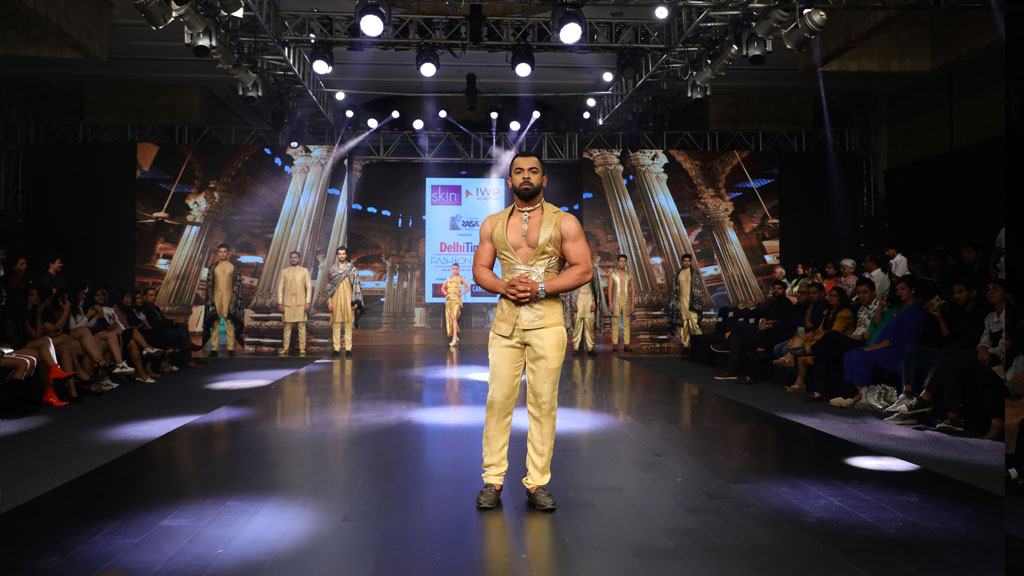Introduction:
Step into a realm where creativity intertwines with fabric, where colors dance in harmony, and where garments become a canvas for self-expression—welcome to the enchanting world of fashion designing. If your heart beats to the rhythm of stitches and your mind weaves dreams of runway elegance, then a fashion designing course might be your key to turning passion into a profession. In this blog post, we’ll delve into the vibrant tapestry of fashion designing courses, exploring the skills they instill, the creative process involved, and the exciting journey that awaits those ready to leave their mark on the fashion landscape.
The Essence of Fashion Designing Courses: Fashion designing courses are more than just a study of garments; they are an exploration of art, culture, and individual expression. These courses serve as the crucible where raw creativity is shaped into the structured elegance that graces runways, stores, and wardrobes around the world.
Comprehensive Design Education: Fashion designing courses provide a comprehensive education that spans the entire design process. From the initial spark of inspiration to the final stitches, students learn the intricacies of sketching, pattern making, garment construction, and the art of bringing their visions to life.
Sketching and Conceptualization: At the heart of fashion designing lies the art of sketching—a skill that translates abstract ideas into tangible designs. Fashion designing courses nurture this skill, guiding students in the techniques of sketching and conceptualization. Whether it’s a flowing gown or a tailored suit, the ability to capture ideas on paper is the first step in the creative journey.
Pattern Making and Draping: Precision is paramount in fashion, and pattern making is the language of precision. Fashion designing courses teach students the art of creating patterns, allowing them to transform two-dimensional fabric into three-dimensional masterpieces. Draping, another crucial skill, lets designers experiment with fabric directly on dress forms, giving life to their creations.
Understanding Fabrics and Textiles: A profound knowledge of fabrics is the cornerstone of fashion designing. Courses delve into the rich world of textiles, teaching students about different fabrics, their properties, and how they interact with various designs. Understanding fabrics empowers designers to choose materials that not only look good but also complement the design and enhance the wearer’s experience.
Color Theory and Design Principles: Fashion is a visual art, and color plays a pivotal role. Fashion designing courses explore color theory and design principles, teaching students how to use hues, tones, and shades to evoke emotions and create visual harmony. Mastery of these principles ensures that designs are not just aesthetically pleasing but also thoughtfully composed.
Garment Construction and Finishing: The journey from sketch to garment involves a meticulous process of construction. Fashion designing courses guide students through the intricacies of garment construction, from sewing techniques to adding embellishments and finishing touches. Attention to detail in every stitch is what elevates a garment from being ordinary to extraordinary.
Fashion Illustration and Portfolio Development: Fashion illustration is more than just drawing; it’s a language that communicates design concepts visually. Fashion designing courses often include training in fashion illustration, helping students refine their skills in presenting designs in a compelling and professional manner. Portfolio development is also emphasized, showcasing the evolution of an individual’s design style and capabilities.
Industry Exposure and Internships: To thrive in the fashion industry, hands-on experience is indispensable. Many fashion designing courses integrate real-world projects and industry exposure into their curriculum. Internships provide students with the opportunity to work alongside established designers, gain insights into the practical side of the industry, and build a network that can open doors to future opportunities.
Innovation and Sustainability: Fashion is not just about trends; it’s also about innovation and sustainability. Fashion designing courses increasingly incorporate modules on eco-friendly practices, ethical sourcing, and the integration of technology in design. This forward-thinking approach ensures that designers are not only creative but also conscientious contributors to the evolving fashion landscape.
The Creative Journey Continues: Embarking on a fashion designing course is not just about learning techniques; it’s a journey of self-discovery and creative evolution. As students immerse themselves in the world of fabrics, colors, and designs, they discover their unique design language. Whether they aspire to create avant-garde couture or design everyday elegance, a comprehensive fashion designing course sets the stage for a lifelong engagement with the art of fashion.
Conclusion:
Enrolling in a fashion designing course is not merely a step towards a career; it’s an invitation to immerse yourself in the enchanting world where ideas become garments and creativity knows no bounds. Whether you dream of gracing runways with your designs or contributing to the fashion industry in your unique way, a fashion designing course is the key to sculpting your style and leaving an indelible mark on the canvas of fashion. So, are you ready to sketch, sew, and soar into the world of fashion designing? Enroll in a fashion designing course and let your creative journey unfurl, stitch by stitch!

